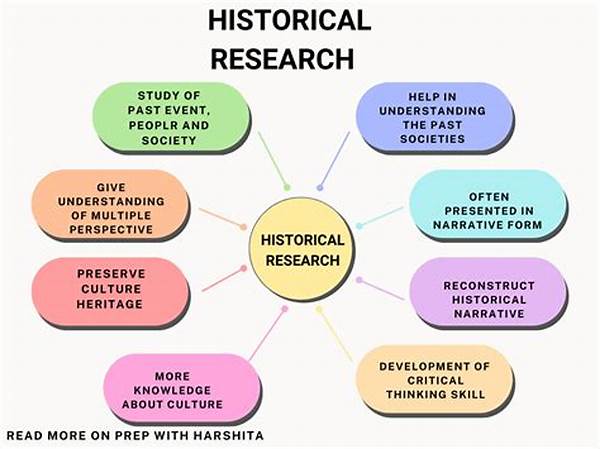Imagine sitting in a room filled with dusty books, pouring over ancient texts to uncover the mysteries of the past. Now, picture instead the vibrant colors, sounds, and voices of history coming to life through a screen. This is the allure of using audiovisual sources in historical research. Not only does it make history accessible and engaging, but it also serves as a bridge connecting different generations. Are you ready to discover how this dynamic approach can change the way we perceive the past and bring people together? Buckle up for a journey that promises to be both entertaining and enlightening!
Read More : Tips For Choosing Background Music For Promotional Videos
In a world dominated by digital content, the traditional methods of historical research can seem cumbersome and outdated. But fear not! Audiovisual sources are here to rescue us from the monotony, offering a more immersive and interactive experience. Whether you’re a student, a history enthusiast, or someone who’s simply curious about the past, these resources provide a unique portal into bygone eras. With a touch of humor, a pinch of storytelling, and a dash of emotion, let’s dive into the why and how of audiovisual sources changing the landscape of historical research.
Bridging the Gap between Past and Present
Making History Relatable
One of the primary benefits of audiovisual sources in historical research is their ability to make history relatable. When you see soldiers marching in a World War II documentary or hear the speeches from the Civil Rights Movement, history steps off the page and into the realm of reality. This sensory experience fosters a connection that static text often cannot achieve, pulling generations together by eliciting empathy and understanding. As a result, younger audiences, who are often visual learners, find themselves drawn in and emotionally invested in the narratives of the past.
Engaging the Younger Generation
What better way to engage the digital-native young generation than through the mediums they love and understand? Audiovisual sources capture attention quickly and can make complex historical events digestible and interesting. A well-curated historical film or documentary does more than inform; it persuades and engages, transforming passive viewers into active participants in the learning process. This sparks a desire to know more and encourages further exploration.
Enhancing Educational Experiences
Expanding Learning Horizons
Audiovisual sources offer an expanded horizon for learning by presenting history in diverse formats—movies, documentaries, virtual reality experiences, and even interactive games. For instance, using VR technology can transport students to the streets of ancient Rome or the decks of the Titanic, offering an unparalleled immersive experience. These innovative methods promote critical thinking, as students analyze and interpret historical events from multiple perspectives.
Encouraging Critical Thinking
By presenting historical content in a multidimensional manner, audiovisual sources encourage viewers to question and analyze. Do the depictions accurately represent the era? What biases might be at play? This critical engagement not only enhances historical understanding but also develops essential thinking skills that are applicable beyond the study of history.
Preserving Cultural Heritage
Documenting Oral Histories
A vital benefit of audiovisual sources in historical research is the preservation of oral histories. Audiovisual media allow us to capture the voices and stories of individuals from various cultures, which might otherwise be lost over time. This ensures that cultural heritage and personal narratives are not only preserved but also shared with future generations, offering a rich tapestry of human experience.
Building a Comprehensive Historical Record
The integration of audiovisual recordings into historical archives complements written records, creating a more comprehensive history. Interviews, music, dance, customs—these elements captured audiovisually enrich our understanding of historical contexts and contribute to a more nuanced historical narrative.
Read More : Lighting Tips In Professional Video Production
Fostering Intergenerational Dialogue
Creating Shared Experiences
Whether it’s a family gathering watching a historical documentary or a classroom project analyzing a famous speech, audiovisual sources create opportunities for intergenerational dialogue. They provide a common ground where stories can be shared and differences in generational perspectives appreciated.
Inspiring Collaborative Projects
The accessibility of audiovisual tools encourages collaborative historical projects that bring multiple generations together. From school assignments that incorporate family interviews to community-driven storytelling initiatives, these projects not only connect generations but also build community spirit.
Summary: The Future of Historical Research
In conclusion, audiovisual sources are not just a tool for engaging with history—they are a vehicle for connection and understanding. By making history accessible and relatable, they bridge generational divides and foster a greater appreciation for the past. As we embrace these dynamic resources, we open the door to a richer, more inclusive narrative that encompasses all voices and perspectives.
The benefits of audiovisual sources in historical research to connect generations are profound. As the digital world continues to evolve, so too will the methods we use to explore history. Let’s embrace this exciting transformation and all the potential it holds for connecting us across time and space.
